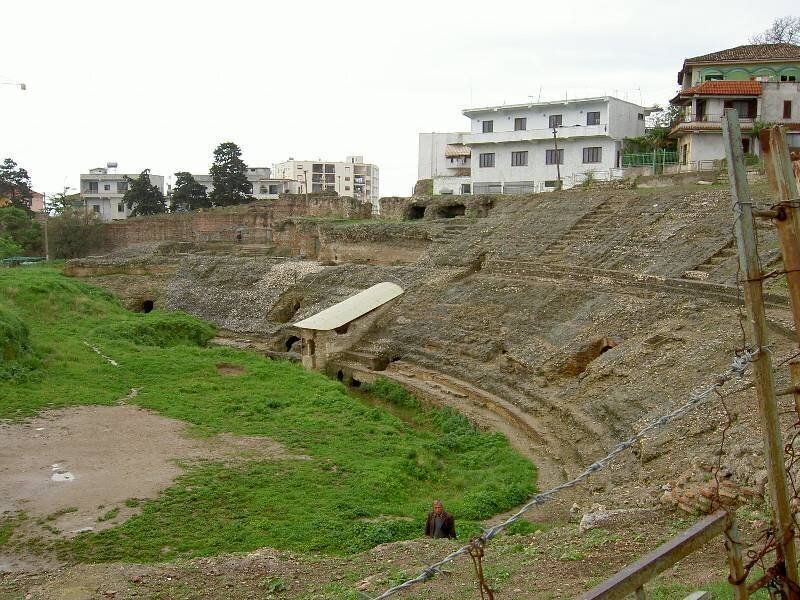
One of Europe's biggest draws for tourism continues to be its landmarks and rich past. From the Amphitheatre in Italy to Westminster Abbey in England, there's no shortage of buildings imbued with centuries' worth of history that bring in summer crowds year after year.
But not all historical landmarks in Europe can garner the attention and tour groups like Greece's Acropolis or France's Arc de Triomphe. Some, like the Vauban’s Fortifications in Briançon, are in such a state of decay that they've been shortlisted as Europe's most endangered landmarks.
On Wednesday, Europa Nostra, a group dedicated to the preservation of European landmarks released their short list of historical sites are at risk of disappearing. On it were a number of churches, monasteries and even an entire city.
“With this new advocacy programme, Europa Nostra aims not only to identify the most endangered monuments and sites in Europe but also to launch a true call for action," said Denis de Kergorlay, Europa Nostra’s Executive President. "We hope to inspire and encourage action by various public and private organizations also in other places in Europe and beyond.”
The group has listed 14 sites across 21 countries after they sifted through 40 nominations. Some sites, like the city of Hasankeyf, remain under the threat of flooding due to nearby construction. Others, like the Renaissance Monastery of San Benedetto Po, near Mantova, Italy, remain so damaged from earth quakes that any future natural disasters could close the site to visitors.
Europa Nostra plans to whittle down the 14 to a list of seven which highlight the most endangered landmarks in Europe by June 16. The winners, if you want to call them that, will receive "rescue teams" of Europa Nostra's heritage experts and financial specialists to visit the seven sites and develop action plans. Rescue teams will later reconvene in Brussels, Belgium in December to share their results at the European Heritage Policy Conference.
To see the full list of endangered sites, check out the slideshow below. Slideshow text follows for mobile readers.
The Roman Amphitheatre In Durrës, Albania
It wasn't until 1966 that this amphitheatre was discovered by a local when they noticed that a fig tree had sunk a few meters in to the ground. The amphitheatre's biggest issue is with integrating with Durrës' urban fabric and local community which might overtake the historic site.
St. Paul And Peter Church, Aragatsotn, Armenia
Crumbling walls and exposed stones are the only remains of this Christian structure that originated in the 5th century. Regular flooding threatens what remains of this historic landmark.
The Buffer Zone Of The Historic Centre Of Nicosia, Cyprus
The buffer zone was originally created to foster peace between the Greek Cypriot and Turkish Cypriot after hostilities broke out between the two groups in the early 60's. The corridor now faces a revitalization project that will inject new life into the buffer but also threatens its historic significance.
St. George Armenian Church, Mardin, Turkey
Now a derelict church, this monument dates back to the 5th century which served Turkey's large Armenian population until the turn of the 20th century. Its significance is one that represents Turkey's efforts to preserve the country's multi-cultural history
Citadel Of Alessandria, Italy
Once a site for the ratification signature as the Treaty of Torsesillas was signed in Tordesillas, Spain. The following year was ratified at the monastery in Portugal. Decay and extensive revitalization costs are currently the biggest threats to this landmark.
Former Royal Estate Of Tatoi, Greece
It may not look like much thanks to years of neglect, but this rare house stands as a testament to Greece's history, architecture and nature. It remains endangered because of a lack of support from local governments and businesses to restore the building to its once former glory.
Berlin's Gas Lamps, Germany
Video killed the radio star and now it looks like modern electricity may kill off Berlin's iconic series of gas lamps. The series of gas street lights are still perfectly functional and remain historically valuable (not to mention they add a touch of romance) to Berlin.
Manueline Style Monastery and Church of Jesus in Setúbal, Portugal
Once a site for the signature of the Treaty of Tordesillas in 1494 between Spain and Portugal, this monastery and church are both now in a state of rapid decay.
The Neighbourhood Of El Cabanyal-Canyamelar In Valencia, Spain
This seaside neighbourhood is known for the decorative façades typically found on the buildings. Locals wish to preserve the buildings from a new road project so that future generations can continue to enjoy their beauty.
Renaissance Monastery Of San Benedetto Po, Near Mantova, Italy
The Renaissance Monastery Of San Benedetto Po earned its fame as a monument of historic and artistic importance during the 15th and 16th century. It was heavily damaged by an earthquake in 2012 and groups now fear that without repairs, the site will close down.
Roşia Montană Mining Landscape In Transylvania, Romania
Three millennia of mining activities have shaped Roşia Montană's mining landscape into what it is today. Oddly, it's the current open-cast gold mining project that threatens the site's environment and heritage, which include situ roman mining machinery.
Neolithic Archaeological Site Of Vinča-Belo Brdo, Near Belgrade, Serbia
It may not look like much but there's a great deal of history that remains uncovered in the site of Vinča-Belo Brdo. The site faces two threats: the nearby Danube’s river bank and a lack of funding to continue excavation.
The Historic City Of Hasankeyf And Its Surroundings, Turkey
The city serves as a contextualized record of shared human history that has spanned both Europe and Asia. The city remains threatened by the construction of a nearby hydroelectric dam that, if completed, would flood 80 per cent of the city's monuments by the next decade.
Vauban’s Fortifications In Briançon, France
Once a fortification to protect the city of Briançon, France, this 17th-century monument now needs help from the international community as it is falling apart from decay.
